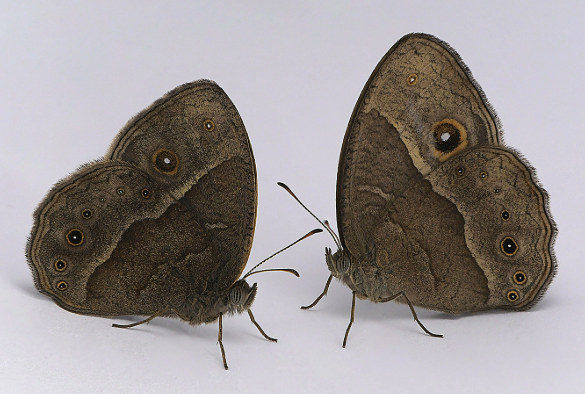New sex-determining mechanism in African butterfly discovered
Published on

In a study of a species of African butterfly, researchers have discovered a previously undescribed molecular mechanism of how the sex of an embryo is initially specified.
Across species, a molecular switch is required to initiate development of a newly formed embryo into a female or a male. The genetic identity of this molecular switch, and how it actually works, differs widely across animal groups, which implies that over evolutionary time the sex determination mechanism is under pressure to change.
In insects, the identity of these primary signals, and how they function, has been described in only a handful of species.
In butterflies and moths, it is the females that determine the sex of offspring. The most common sex determination switch is thought to be a gene (Feminizer) on the female-specific W chromosome, which initiates the female pathway by inhibiting a gene (Masculinizer) on the sex (Z) chromosome that initiates the male pathway.
Working on a species of African butterfly, the Squinting Bush Brown, researchers from the University of Liverpool have discovered a radically different molecular switch that does not require a sex-limited gene or chromosome. Instead, it relies on recognition of sequence differences between the two copies of Masculinizer within genetic (ZZ) males, to produce healthy males.
When an embryo has one Z chromosome, and therefore one copy of Masculinizer, it develops into a healthy female (even in the absence of the W chromosome). However, a cost of this mechanism is that ZZ (genetically male) embryos with identical copies of Masculinizer are sent down the female developmental pathway and die as embryos because of imbalances between the expression of genes on the Z chromosome and autosomes (non-sex chromosomes).
Butterflies who mate with an individual that shares an identical copy of Masculinizer produce 50% fewer sons than non-identical pairings. This makes it highly advantageous to be a rare variant (allele) of Masculinizer, resulting in very large numbers of alleles in these butterflies.
Corresponding author the University of Liverpool’s Ilik Saccheri, Professor of Ecological Genetics said: “Nature has devised many ways of producing males and females. Our discovery of this primary switch highlights the fascinating diversity of sex-determining mechanisms and underlying evolutionary drivers. We suspect that this alternative mechanism evolved as a response to male-killing bacteria that are known to subvert sex-determination machinery in order to promote their own transmission through host females. In the future, we would like to reconstruct where on the evolutionary tree this alternative sex determination mechanism evolved, explore whether structurally similar mechanisms have evolved independently in other butterflies and moths, and figure out how the Masculinizer same/different mechanism actually functions.”
The full study is available here: https://www.science.org/doi/10.1126/sciadv.adj6979